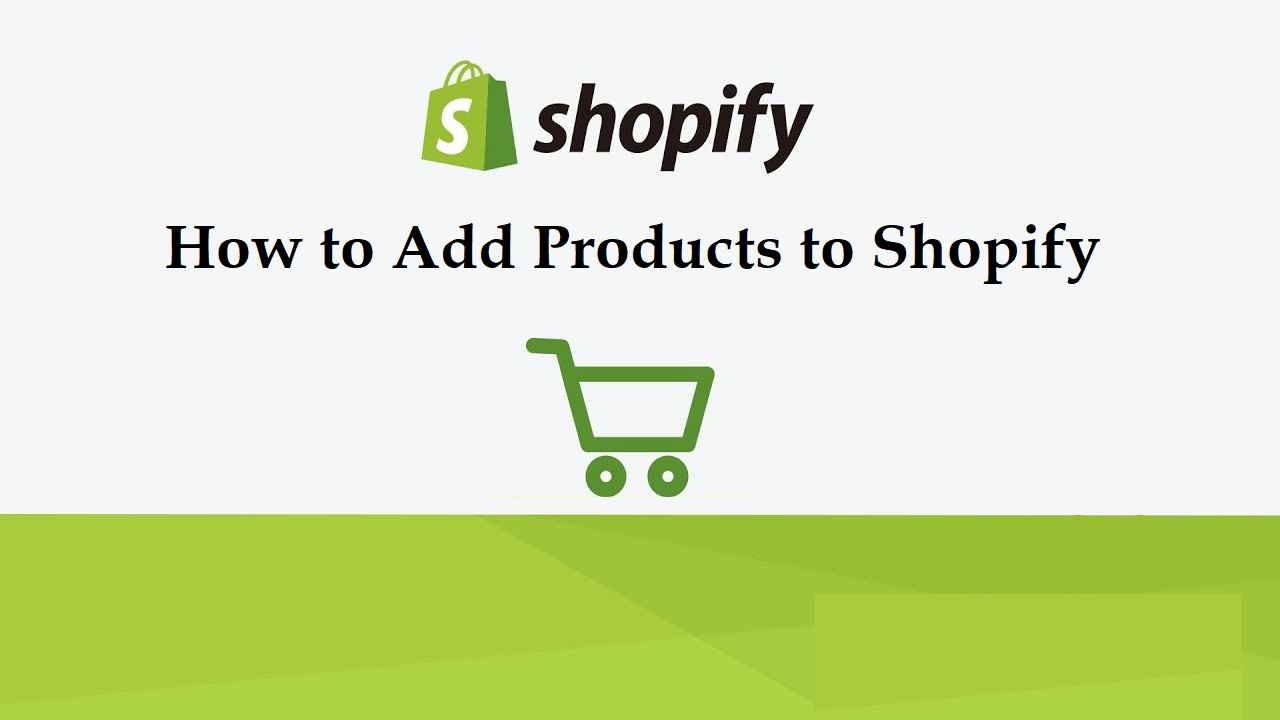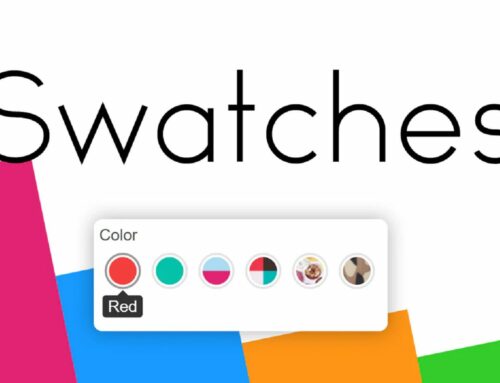Setting up an online store on Shopify is a crucial initial step towards making an income online. And it is crucial to have your products listed on Shopify. If you lack knowledge on how to add products to Shopify, you have arrived at the proper destination.
Within this article, BSS Commerce Shopify will provide you with comprehensive, step-by-step instructions on how to add products to Shopify. Not only that, there are a plethora of valuable tips and tricks in this blog to ensure that you make the most of the product page you have.
Contents
How to Add Products to Shopify Store: 6 Main Steps
‘How to Add Products to Shopify Store’ is a popular question for anyone active in online business on the Shopify platform. However, the process of doing this is quite tough. As a result, in this section below, BSS Commerce Shopify will provide step-by-step guides about the 6 main steps to adding products to Shopify:
Step 1. Log in to Your Shopify Account
Access admin.shopify.com, log in to your account, and provide your store address, email address, and password. For added convenience, you may opt to select the ‘remember me’ option.
Step 2. Add Product Information
To access the product page on your Shopify account, navigate to the Products tab located below the Search option. Once there, select the ‘Add a product’ option to proceed to the product page.
After that, you can proceed with adding the required information to your product page. This will involve providing details such as the product title and description.
Title
The name you choose for the product is referred to as the product title. For example, if you are selling women’s shoes, you might name them ‘Flat Casual Women Shoes With Plain Color.’ Titles should be concise, appealing, and focused. In addition, titles should maintain a consistent style across all pages and provide customers with the necessary information without confusing them.

Description
Crafting a compelling product description is crucial for your product page. It presents an opportunity to grab your audience’s attention and persuade them to buy what you’re offering. To create a strong product description, prioritize the benefits that your customers will receive.
For example, when selling an armchair, you could begin with something like: “Indulge in the ultimate comfort with this spacious armchair, perfect for snuggling up with your loved one.” Avoid creating a lengthy inventory of features and specifications when writing a product description. Instead, strive to captivate your audience by using sensory words, incorporating social proof, and even weaving in mini-stories.
Use the same structure for the product description each time you add a new item to your website. This could help raise the brand’s identity and make an impression on the customer’s memory.
Step 3. Adding Media
To upload images, videos, or 3D models of the product, let’s click on the ‘Add file’ button. You can add media files by either dragging and dropping them into the designated area, importing them from the computer, or adding them from a URL.

Keep in mind that the media you add for the products is of high resolution and meets the required specifications to be displayed properly.
For product images, the recommended file format is PNG, JPEG, or GIF. And with videos, the maximum file size is 1 GB. For optimal display on Shopify, it is recommended to have a video resolution of 4K.
If you are uploading 3D models, make sure they are formatted in either GLB or USDZ. If your 3D model file exceeds 15 MB, Shopify will automatically optimize the file to maintain high quality while reducing its size.
Step 4. Add Pricing, Inventory, and Additional Details
After finishing the main section of your product description, the subsequent task is to provide additional information. Within these sections on Shopify, you can input details such as the product SKU, price, shipping options, and weight.
Pricing
‘Price’ refers to the amount you pay at the register, whereas ‘Compare at price’ denotes the list price of a discounted item.

For example, if you set the ‘Compare at price’ to $99 and keep the ‘Price’ at $49, the product will be displayed as $50 off. If the product is not currently on sale, you can simply leave this field empty.
The ‘Cost per item’ feature enables you to keep track of the cost of the goods you are selling. If you are reselling a product, you should enter the price you paid to the manufacturer, excluding any taxes, shipping fees, or additional expenses.
If you are the sole producer of the product, input a value that reflects the expenses incurred for materials and labor. This will enable to monitoring of the product information and generate reports for profit analysis (reports are exclusively accessible on the Shopify plan or above).
Select ‘Charge tax on this product’ if the product is subject to taxation.
Inventory
The Stock Keeping Unit (SKU), also referred to as the SKU, is a distinct identifier assigned to a product. SKUs play a crucial role in efficiently organizing inventory and fulfilling orders. For those who are new to SKUs, they have the flexibility to create their own format that aligns with their preferences.
Adjacent to the SKU field, you will notice an option called Barcode. If you are just starting your business and exclusively selling online, there is no immediate need to concern yourself with this feature.

With the ‘Track quantity’ box, the Shopify admin system will monitor the available quantity of this particular product. This inventory tracking functionality becomes particularly important when you have limited stock, ensuring that you do not sell items that are out of stock.
Moreover, you have the option to select ‘Continue selling when out of stock’ if you can meet demand and promptly restock the items.’
Weight
In the Shipping section, select the option ‘This is a physical product’ if you are selling a physical item that requires delivery. Conversely, if you are selling digital products or services that do not require shipping, leave this option unchecked.

Next, input the weight of the product. Let’s provide an accurate weight so that your customers are charged the appropriate shipping fee.
In the drop-down menu located on the right-hand side, you will find various units of measurement to choose from, including lb, oz, kg, and g. Thereby, select the unit that best corresponds to the weight of the product.
Step 5. Edit the Listing for the Search Engine
The search engine listing section will display how the product is displayed in search engine results such as Google and Bing. To modify the preview, simply click on ‘Edit’. The preview is usually a replica of the product title and description you’ve already written.

If your copy goes over the character limit, it might be reduced.
Condition for complete text to display in search engine results:
- Don’t exceed 70 characters in the product title.
- Don’t exceed 320 characters when describing the product.
Step 6. Edit Product Organization and Product Status
Product Organization

- Type. You can add a custom product type or utilize one of the existing ones.
- Vendor. The vendor refers to the entity responsible for manufacturing or selling the product. If you are the creator of the product, you can use your business name as the vendor. Alternatively, you can leave this field blank.
- Collections. To enhance the discoverability of your products, you can assign them to specific collections in Shopify. Through grouping the products into collections, you facilitate the process of customers finding the products they are looking for.
- Tags play a crucial role in categorizing products and organizing search results for your customers. Depending on your settings, a product can have multiple tags, allowing for efficient product classification.
Product Status

If your product is prepared to be showcased on the Shopify store, opt for the “Active” option. However, if it is not yet ready, you can choose “Draft” to store it in your product listings.
To complete the process of how to add products to Shopify, let’s click on the “Save” button. And finally, your product is now available on the Shopify store; get started with its first sale!
How to Optimize Conversion for the Product Page
Here are the step-by-step instructions to help optimize the product pages efficiently:
Create Appealing Product Descriptions
Product descriptions that are written correctly always pay off by encouraging purchases and boosting customer trust in the business. Hence, when writing the product descriptions, consider the following:
- Craft a concise and descriptive paragraph that highlights the problems your product solves, the benefits customers can expect, and what sets your product apart from others.
- Boost some creativity in the descriptions to make them more relatable and engaging. Don’t be afraid to add a touch of humor or storytelling to connect with the audience more.
- Add a bulleted list of features and specifications to provide a clear overview of what the product offers. At once, add any necessary technical details that are helpful for customers.
- Add social proof by showcasing positive reviews and testimonials from satisfied customers.
- Consider increasing the font size of your product descriptions to enhance readability.
Make Pixel-perfect Visuals
In the realm of online commerce, the power of compelling visuals surpasses that of any sales pitch. Since customers cannot physically experience the product, they heavily rely on visuals to imagine its real-life attributes. Hence, the quality of the visuals plays a pivotal role in persuading customers to believe in the product’s value and make a purchase.
Refer to some critical criteria for product page visuals as follows:
- Add multiple images to show all product variations. Product Variants is a comprehensive customization solution that provides limitless product options to tailor offerings. Moreover, it empowers customers to customize their purchases and boost sales effectively. Additionally, it offers multiple methods to communicate product preferences to merchants, enhancing the overall shopping experience.
- Create shorter product videos. The video’s time of 30 to 90 seconds is good.
- Use 3D models to showcase the products from all sides. Site visitors can easily discover multiple views of the product.
Write Persuasive Calls to Action
The CTA button plays a crucial role in guiding customers towards the checkout process and converting them into paying customers. Therefore, it is essential to position your CTA prominently on the page, ensuring it is easily visible and clickable.
Below are the 3 best tips to create an appealing CTA:
- Typically, CTAs are found beside product images or below product details. As a result, the best way is to optimize the placement of the CTAs by positioning them prominently at the top of the page, ensuring they are visible without scrolling.
- Grab the customers’ attention by making the CTAs visually striking. Using vibrant or contrasting colors that contrast with the background will guide your customers’ focus towards the button.
- Create a sufficiently sized CTA button that is user-friendly for both desktop and mobile users. Whether using a mouse or a finger, ensure that the CTA button is large enough and easy to click on the first try.
Final Words
When it comes to adding new products to the Shopify store, the process is quite straightforward. All you need to do is access the main Shopify admin dashboard, which is easily accessible after creating the Shopify account.
There are multiple methods about how to add products to Shopify store, with the manual option being the most commonly used. However, when having a large number of products or wanting to transfer them from another shop, importing a CSV file is the recommended choice.
Adding new products to the store is an important milestone in building a successful business. However, it’s important to remember that this is just the beginning. To further enhance your product page and your business, BSS Commerce Shopify recommends exploring other helpful articles here.
Product Editing:
- How To Add New And Customize Shopify Product Labels?
- How To Hide Product On Shopify: An Ultimate Guide 2024
Additional Features for Product Pages:
- Ecommerce Product Page Optimization For Better Conversions
- Shopify Product Variants: A Complete Guide and How to Avoid Common Errors
- Top 10 Shopify Product Options Apps Help You Break Shopify’s Limit
- Shopify Bundle Product – The Success Behind Many ECommerce Stores
Themes for Each Product Type:
- 10+ Best Shopify Theme For Custom Products (Free & Premium)
- 13+ Top-rated Shopify Single Product Themes for Your Store
More FAQs
1. How Can I Upload More than One Item to Shopify?
There are two methods available for adding multiple products to Shopify: utilizing a CSV sheet or integrating a third-party app.
2. Can I Delete a Product on the Shopify Store?
Yes. To remove a product from your Shopify store, you have the option to delete it individually or delete multiple products simultaneously through a bulk action. Deleting a product will result in its permanent removal from your store, and it cannot be restored.
However, if you find yourself in a situation where you no longer wish to display a product or it is out of stock, but you don’t want to permanently delete it, you can choose to archive the product instead.
3. How to Duplicate a Product in the Shopify Store to Save Time?
When adding a new product, you can duplicate an existing product to save time. Rather than making a duplicate of an existing product, create a variant with additional options like color or size.
When you choose to duplicate a product, you can select which product details to copy over, including:
- images
- SKUs
- barcodes
- inventory quantity
These product information are blank in the duplicate if you leave the choices unselected. All other product information, with the exception of 3D models and films, is duplicated from the original.
Embarking on the journey of digital transformation with Shopify requires seamless migration of your existing platform to ensure a smooth transition and uninterrupted business operations. At BSS Commerce, we specialize in providing comprehensive Shopify Migration Services tailored to meet the unique needs of your business.




